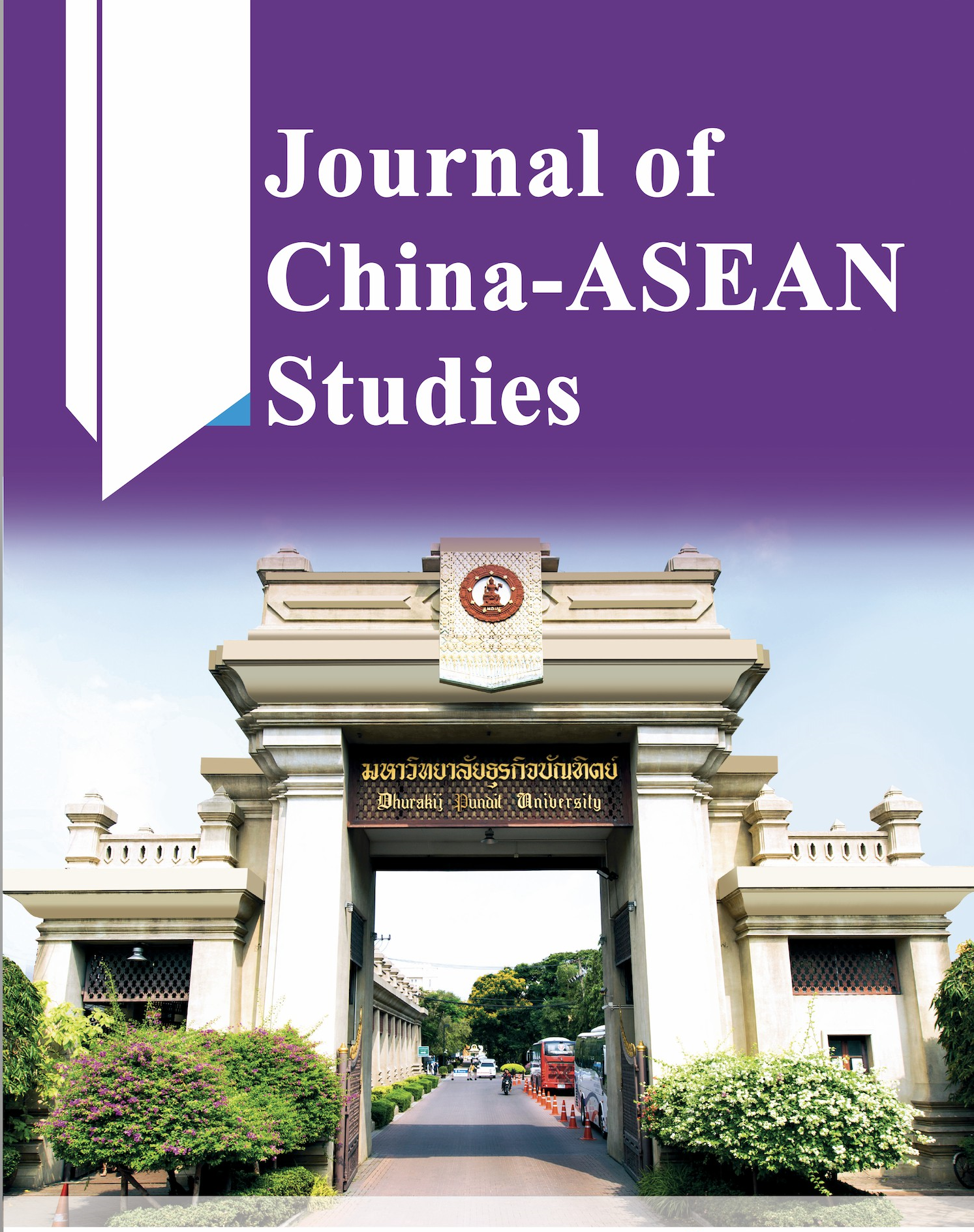The Effectiveness of an Intervention Programme on Working Memory Plus Arithmetic Knowledge (WM+A)Title
Keywords:
Working Memory, Arithmetic Knowledge, Intervention Programme, Mathematics Attainment, Mathematics EducationAbstract
The aim of the study is to examine the effectiveness of an intervention programme (WM+A)
which is designed to improve children’s maths attainment. The intervention programme
consists of two parts: working memory intervention and arithmetic knowledge intervention.
Three research questions are asked: (1) What is the effect of WM+A intervention on children’s
numeracy skills? (2) What is the effect of WM+A intervention on children’s working memory?
(3) What is the effect of WM+A intervention on children’s attention and behaviour in class?
The investigation will be carried out at international schools in Thailand, which follow the
National Curriculum in England and use English as a medium of instruction for teaching and
learning. Pre-tests will be given to assess children’s numeracy skills, working memory,
attention and behaviour in class, followed by intervention session for 10 weeks. Children will
receive 5 weeks of working memory intervention, followed by 5 weeks of arithmetic knowledge
intervention. During the intervention session, half of the time will be one-to-one teacher led
activities, and the other half will be computer games that reinforce the strategy and concepts
which have been learned in the teacher led activities. Post-tests will then be conducted to
measure the outcomes and evaluate the effectiveness of the WM+A intervention programme.
It is expected that the current study will contribute both to the theory of children’s maths
attainment and on the practice of maths education.
References
Alloway, T.P. (2007). Automated Working:Memory Assessment: Manual. Pearson.https://www.pearsonclinical.ca/en/products/product-master/item-83.html
Barahmand, U. (2008). Arithmetic disabilities: training in attention and memory enhances arithmetic ability. Research Journal of Biological Sciences, 3(11), 1305-1312.https://medwelljournals.com/abstract/?doi=rjbsci.2008.1305.1312
Bradley, L., & Bryant, P. (1983). Categorising sounds and learning to read -a causal connection. Nature, 301, 419-421. https://doi.org/10.1038/301419a0
Baddeley, A. (2010). Working memory. Current Biology, 20(4), R136-R140.https://doi.org/10.1016/j.cub.2009.12.014
Baddeley, A.D., Allen, R.J.,& Hitch, G.J. (2011). Binding in visual working memory: The role of the episodic buffer. Neuropsychologia, 49(6), 1393- 1400.https://doi.org/10.4324/9781315111261-25
Fisher, A., Thiessen, E., Godwin, K., Kloos, H., & Dickerson, J. (2013). Assessing selective sustained attention in 3-to 5-year-old children: Evidence from a new paradigm. Journal of Experimental Child Psychology, 114(2), 275– 294.https://doi.org/10.1016/j.jecp.2012.07.006
Hammond, S.I., Müller, U., Carpendale, J.I. M., Bibok, M.B., & Liebermann-Finestone, D. P. (2012). The effects of parental scaffolding on preschoolers’ executive function. Developmental Psychology, 48(1), 271–281. https://doi.org/10.1037/a0025519
Holmes, J., Gathercole, S.E. & Dunning, D.L. (2009). Adaptive training leads to sustained enhancement of poor working memory in children. Developmental science, 12(4), F9-F15.https://doi.org/10.1111/j.1467-7687.2009.00848.x
Holmes, J., & Gathercole, S.E. (2014). Taking working memory training from the laboratory into schools. Educational Psychology, 34(4), 440-450. https://doi.org/10.1080/01443410.2013.797338
Howard-Jones, P. A., & Demetriou, S. (2009). Uncertainty and engagement with learning games. Instructional Science, 37(6), 519–536.https://doi.org/10.1007/s11251-008-9073-6
LeFevre, J. A., Berrigan, L.,Vendetti, C., Kamawar, D., Bisanz, J.,Skwarchuk, S. L., & Smith-Chant, B. L. (2013). The role of executive attention in the acquisition of mathematical skills for children in Grades 2 through 4. Journal of Experimental Child Psychology, 114(2), 243–261.https://doi.org/10.1016/j.jecp.2012.10.005
Liew, J., Chen, Q., & Hughes, J.N. (2010). Child effortful control, teacher-student relationships, and achievement in academically at-risk children: Additive and interactive effects. Early Childhood Research Quarterly, 25, 51-64.https://doi.org/10.1016/j.ecresq.2009.07.005
Melby-Lervåg, M., & Hulme, C. (2013). Is working memory training effective? A meta-analytic review. Developmental Psychology, 49(2), 270-291.https://doi.org/10.1037/a0028228
Nunes, T., Bryant, P., Evans, D., Bell, D., Gardner, S., Gardner, A., & Carraher, J. (2007). The Contribution of Logical Reasoning to the Learning of Mathematics in Primary School. British Journal of Developmental Psychology, 25(1), 147- 166.https://doi.org/10.1348/026151006x153127
Nunes, T., Evans, D., Bell, D.,& Campos, T. (2008, March). Improving children’s working memory through guided rehearsal.[Paper presentation]. American Educational Research Association (AERA) Conference 2008, New York, United States.
Nunes, T., Barros, R., Evans, D., & Burman, D. (2012). A game-based working memory intervention for deaf children. In Wannemacker,S. D., Vandercruyse S. &Clarebout,G. (Eds)., Serious games: The challenge(pp. 31-39). https://doi.org/10.1007/978-3-642-33814-4_4
Nunes, T., Barros, R., Evans, D., & Burman, D. (2014). Improving deaf children’s working memory through training. International Journal of Speech & Language Pathology and Audiology, 2(2), 51-66. https://doi.org/10.12970/2311-1917.2014.02.02.1
Passolunghi, M.C.,& Costa, H.M. (2016). Working memory and early numeracy training in preschoolchildren. Child Neuropsychology, 22(1), 81- 98.https://doi.org/10.1080/09297049.2014.971726
Pickering, S., & Gathercole, S. (2001). Working Memory Test Battery for Children (WMTB-C)Manual. The Psychological Corporation. https://www.pearsonclinical.co.uk/Psychology/ChildCognitionNeuropsychologyandLanguage/ChildMemory/WorkingMemoryTestBatteryforChildren(WMTB-C)/WorkingMemoryTestBatteryforChildren(WMTB-C).aspx
Shipstead, Z., Redick, T. S., & Engle, R.W. (2012). Is working memory training effective?.Psychological Bulletin, 138(4), 628-654. https://doi.org/10.1037/a0027473
Swanson, J.M., Kraemer, H.C., Hinshaw, S.P.,Arnold, L.E., Conners, C.K., Abikoff, H.B., Clevenger, W., Davies, M., Elliott, G.R., Greenhill, L.L.,& Hechtman, L. (2001). Clinical relevance of the primary findings of the MTA: success rates based on severity of ADHD and ODD symptoms at the end of treatment. Journal of the American Academy of Child & Adolescent Psychiatry, 40(2), 168-179.https://doi.org/10.1097/00004583-200102000-00011
Von Bastian, C. C., & Oberauer, K. (2014). Effects and mechanisms of working memory training: a review. Psychological Research, 78(6), 803-820. https://doi.org/10.1007/s00426-013-0524-6
Wright, H., Dorsett, R., Anders, J., Buzzeo, J., Runge, J., & Sanders, M. (2019). Improving W o r k i n g M e m o r y E v a l u a t i o n R e p o r t. https://educationendowmentfoundation.org.uk/public/files/Projects/Evaluation_Reports/Improving_Working_Memory_Report_final.pdf






